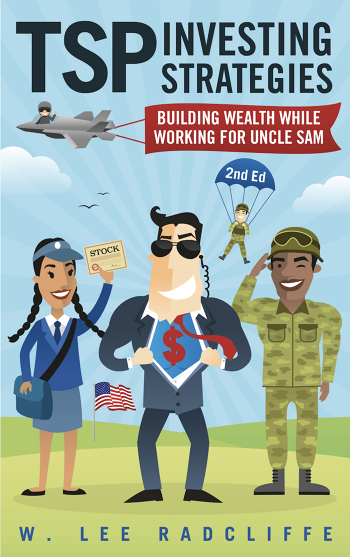
Quarter Finalist
Assessment:
Plot: W. Lee Radcliffe's second edition of his TSP Investing Strategies is a book that will appeal only to a highly specific audience, that of government employees and military personnel who qualify for enrollment in the U.S. government's Thrift Savings Plan, but he has mastered his niche. With his own research into market habits and much explanatory number-crunching, Radcliff demystifies this investment opportunity that he calls "one of the greatest mechanisms through which to build wealth in the world". With a thoroughness uncommon to many investment guides, Radcliffe walks readers through the basics of TSP -- as well as some of the arcana -- before presenting six flexible, detailed strategies for investment, all targeted toward the idea of building the kind of wealth that results in financial independence.
Prose/Style: Radcliffe's prose is mostly clear, though sentences can run long and tend toward density, especially when he's chasing one of his many hypothetical investment scenarios. The book is repetitive by design, a virtue when it comes to communicating complex information but likely a cause of frustration for some readers. His decision to sidebar some examples, and to break chapters up into clearly labeled sections, makes the dry material more approachable. Unlike many investment guides, Radcliffe writes as a serious number-cruncher rather than as a cheerleader or rainmaker; while his scrupulousness results in sound advice, but the prose has little of the salesman's kick common to this genre.
Originality: Page after page, example after example, Radcliffe runs his own numbers, crafts his own examples, and coins his own clarifying terminology, such as the "The Thrift Van
Winkle™ approach to long-term investing."
Character Development: Two crucial factors separate Radcliffe's work from most investment guides. First is his exhaustive thoroughness, which is certain to engender trust in readers even as it might overwhelm them. Fortunately, Radcliffe divides his chapters into clearly labeled sections that readers can approach in a modular fashion, focusing on what matters to them. Second, Radcliffe's investment strategies are often flexible, and he accommodates and addresses a wide variety of readers' needs (the need to invest for college, six different approaches for investing in real estate). He tailors his strategies to account for readers' personal level of comfort with risk and repeats crucial information in multiple places, ensuring that readers who skim over material not targeted to their particular interests will still likely encounter it. All of this makes TSP Investing Strategies a somewhat difficult read but a highly effective guide.
Blurb: With this updated second edition, W. Lee Radcliffe cements his position as the Bill James or Nate Silver of investing through the Thrift Savings Plan available to government workers and military personnel. He's mastered the numbers, tested data and outcomes, goes further into the weeds than you might want to follow, but emerges with clear-eyed and persuasive analysis of how complex systems truly function. His six TSP investment strategies are flexible, thoroughly detailed, and easy to understand.
Date Submitted: October 20, 2020


